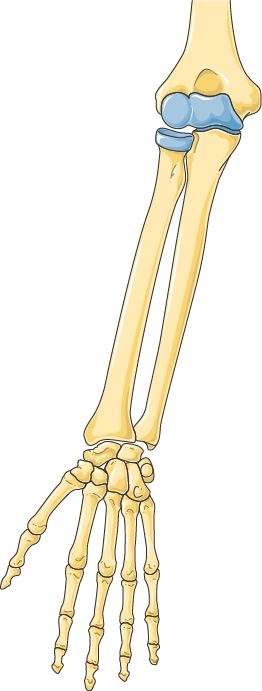INTRODUCTION
CAPR provides 50 sample questions for PCE written exam. These practice questions are available as a resource for candidates preparing for the Written Component of the Physiotherapy Competency Examination (PCE).
Let’s answer these questions and try to find the reasons.
A 29-year-old man attends physiotherapy at a rehabilitation centre. He fell onto his right elbow four weeks ago. The client reports pain and numbness in the ring finger and little finger and difficulty using the right hand.
- When assessing the right upper extremity, which of the following sustained movements would the physiotherapist expect to exacerbate the client’s symptoms?
A. Elbow flexion.
B. Elbow extension.
C. Wrist flexion.
D. Forearm supination.

The answer is “A”
Elbow flexion can exacerbate ulnar nerve syndrome. Ulnar nerve entrapment at the elbow (Cubital Tunnel Syndrome) occurs due to repetitive compression, from leaning on the elbows or wrists (cyclist’s palsy) and prolonged elbow flexion. The ulnar nerve passes just under the surface of the skin near the elbow, so bumping the nerve there causes the pain and tingling of “hitting the funny bone.” Elbow flexion can put pressure on the ulnar nerve and exacerbate symptoms such as tingling in fingers 4 and 5, weak grip strength, pain, and sensitivity on the ulnar side of the forearm, wrist, and hand. The other options, such as elbow extension, wrist flexion, and forearm supination, are less likely to exacerbate ulnar nerve syndrome1,2,3,4,5.
- The physiotherapist performs the Tinel’s test on the client. In which of the following areas would the physiotherapist most likely expect a positive test result?
A. Carpal tunnel.
B. Lateral epicondyle.
C. Cubital tunnel.
D. Cubital fossa.

The answer is “C”
Cubital tunnel syndrome is a condition that occurs when the ulnar nerve is compressed or irritated at the elbow. The ulnar nerve passes through a narrow tunnel of tissue (cubital tunnel) on the inside of the elbow, and when it is compressed, it can cause symptoms such as tingling, numbness, and weakness in the hand and fingers. Tinel’s test is a diagnostic test used to assess the presence of cubital tunnel syndrome. During the test, the physiotherapist taps lightly along the inside of the elbow, directly over the ulnar nerve. If the ulnar nerve is irritated, it may cause a tingling sensation that radiates outward, which is also called paresthesia. A positive Tinel’s sign at the elbow indicates an irritated ulnar nerve. Tinel’s sign can also be used to test for other nerve conditions, such as carpal tunnel syndrome and radial nerve entrapment. Treatment for cubital tunnel syndrome may include physical therapy, medication, and surgery, depending on the severity of the condition1,2,3,4,5.
CONCLUSION
We tried to answer three items from the CAPR sample questions. How was your result?
I will post other questions with explanations, so let’s beat the exam together!
WORK IN CANaDA. YOU NEED TO SPEAK ENGLISH.
DO YOU WANT TO IMPROVE YOUR ENGLISH?
CLICK HERE!
There is more about CAPR and PCE articles in this blog.


Pingback: PCE Written Practice question 5-(1) My Physio Adventure
Pingback: PCE WRITTEN EXAM PRACTICE QUESTIONS – 6 My Physio Adventure